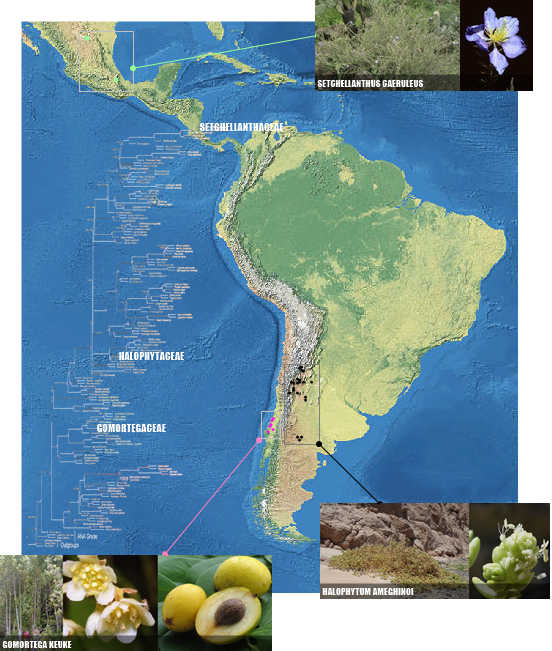February 07, 2024
June 10, 2023
NEW WORLD ANGIOSPERM ENDEMIC FAMILIES ✅
LAST UPDATED IN 29.09.2024
⋵: 'ENDEMICS'
In old classifications, other families endemic to a country were already recognized as valid. It is the case of Leiteriaceae Benth. (DELTA INTKEY), composed by Leitneria floridana Chapm. and L. pilosa J.A.Schrad. & W.R.Graves, known from Missouri, Arkansas, Texas, Georgia and Florida states in U.S.A., now united within Simaroubaceae (POWO); Duckeodendraceae Kuhlmann (DELTA-INTKEY), known only from Duckeodendron cestroides Kuhlmann, endemic to Amazon forest in Amazonas and Pará states in northern Brazil (GBIF), now under Solanaceae; and and Pterostemonaceae (Engl.) Small (DELTA-INTKEY), known from three species endemics to Mexico, now within Iteaceae (POWO).
Finally, some families are almost endemic of countries, such as Stegnospermataceae Nakai in Mexico (4 spp., all in Meexico, 3 endemics and one up to Central America and Caribbean, POWO), and Rhabdodendraceae Gilg. & Pilg. in Brazil (3 spp., all from Brazil, two endemics and one up to Guianas, Venezuela and Colombia, POWO), both Caryophyllales.
May 25, 2023
ANIMAL OUTER FAMILIES NEAR BRAZIL
LAST UPDATED IN 29.09.2024
Two mammal families was collected near Brazilina borders, and maybe collected also in country. Both was collected in NE Argentina, near Brazilian border at western bank of Uruguay river, in Rio Grande do Sul state. Lagostomus maximus Desmarest, 1817, belong to rodent family Chinchilidae, a family absent in Brazil, and also occur in Bolivia and Paraguay; Chacodelphys formosa Shamel, 1930, is a marsupial from Didelphidae family, and is a endemic genus for Argentina.
 |
| ARGENTINAN RANGE OF LAGOSTOMUS (BLUE DOTS, ECOREGISTROS) AND CHACODELPHYS (PINK DOTS, TETA & PARDINAS, 2007, SEE) |

